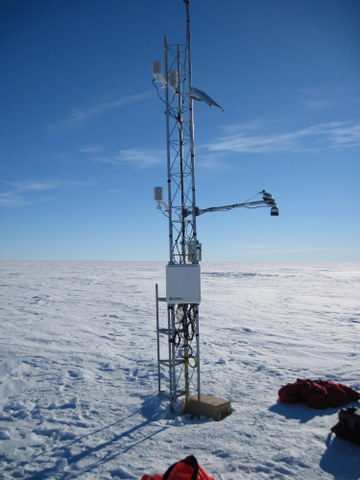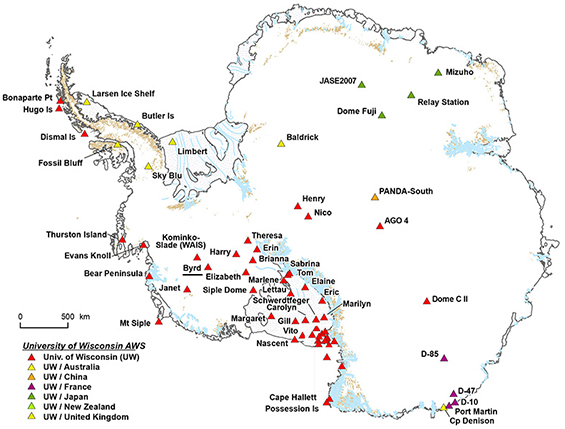UW-Madison AWS Observations Contribute to Finding Significant Warming in West Antarctica
Using data collected by the Byrd Automatic Weather Station (AWS), installed and maintained by the UW-Madison in West Antarctica, researchers published a paper in Nature Geoscience on 23 December 2012 suggesting that warming in West Antarctica may have been underestimated, especially in the summer months.
The research team, led by Dr. David Bromwich of Ohio State University, included scientists from the National Center for Atmospheric Research (NCAR) and the UW-Madison Antarctic Meteorological Research Center (AMRC). In the paper, they present a “complete temperature record for Byrd Station, in which observations have been corrected, and gaps have been filled using global reanalysis data and spatial interpolation.”
By analyzing observations from the Byrd Automatic Weather Station in Antarctica for the period 1958 – 2010, the record shows a warming in West Antarctica of as much as 2.4 degrees Celsius or 4.3 degrees Fahrenheit, making Central West Antarctica one of the fastest warming locations on the Earth.
The Byrd AWS is part of a network of over 60 AWS stations on the Antarctic continent installed and maintained by the UW-Madison AMRC since 1980. Maintaining occupied sites for collecting meteorological observations in Antarctica is expensive. The capabilities of an automatic weather station allow for the retrieval of important weather information without needing a person on duty at each site.
The paper introduces the possibility that temperatures could rise above freezing more frequently in the summer months, raising concern that this process of surface melting could potentially weaken the ice sheet over time.
Dr. Matthew Lazzara, a co-author on the paper and head of the AMRC at the University of Wisconsin-Madison, says, “These stations have proven to be an invaluable resource for researchers, forecasters, as well as the general public, as they yield important meteorological information about the Antarctic.”
More links.


